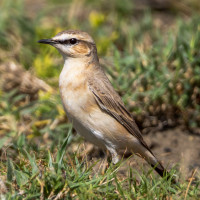Opis
The Dwejra area is open country with low vegetation. The area is one of the most geologically interesting areas in the Maltese Islands, with sheer coastal cliffs, the offshore island called Fungus Rock, the so-called inland sea etc. Being the westernmost point of the archipelago, the site is a magnet for migrants. The site is at it's best during spring migration, when one can see several species typical of open habitats such as błotniak stawowy, błotniak stepowy, błotniak łąkowy, pustułeczka, przepiórka białorzytka, białorzytka płowa, białorzytka rdzawa, świergotek polny dudek, pokląskwa, dzierzba rudogłowa and more. In easterly winds, flocks of herons, including czapla purpurowa and czapla modronosa, may be seen migrating offshore or resting on the coast. Autumn and winter are less exciting but can still be good for migrants and common wintering birds. The area also hosts interesting breeding species in summer, including Burzyk żółtodzioby (diomedea), burzyk sródziemnomorski, jerzyk blady, modrak and pokrzewka okularowa.
Szczegóły
Dostęp
The area is a major tourist attraction, so it easily accessible by any transport. Check www.publictransport.com.mt/ for public transport routes. Walking is the best way to explore the area.

